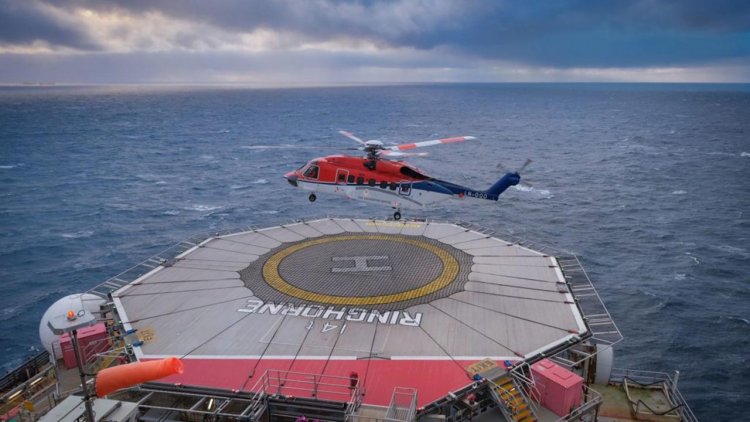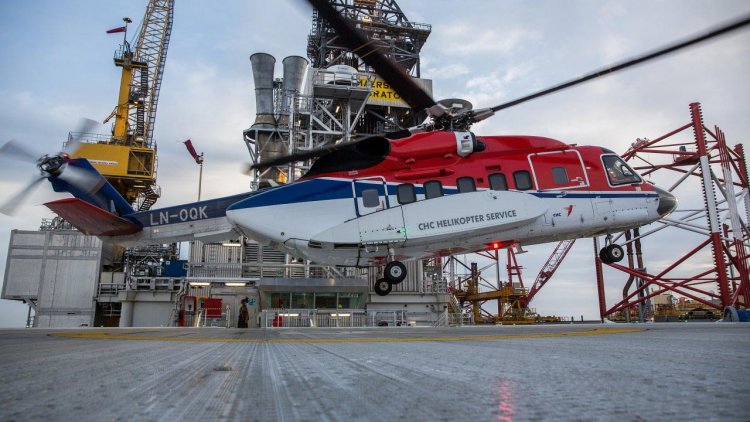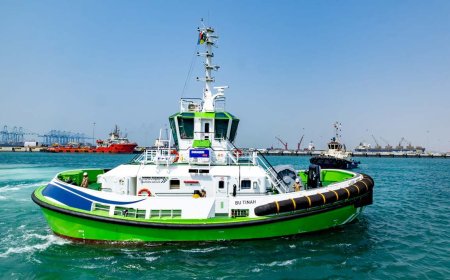Study: Offshore helicopter traffic plunged by 15% due to the pandemic
However, positive flight traffic reports indicate that activity could bounce back by the end of 2020.

Global demand for helicopter transport to offshore facilities plunged in 2020 as a result of the Covid-19 pandemic, a Rystad Energy report shows. Helicopter traffic was affected as non-critical maintenance crews were moved to shore and other non-essential operations at offshore facilities were preventatively deferred to reduce the risk of contamination and conserve cash.
Rystad Energy estimates offshore helicopter traffic will have declined by 15% in 2020, dropping to 410 million passenger miles from 483 million passenger miles in 2019. Traffic fell even though production facilities and moveable offshore drilling units (MODUs) – the two main drivers of helicopter demand within oil and gas extraction and drilling operations – only experienced limited disruptions.
The North Sea is the world’s busiest region for offshore-bound helicopters, representing 22% of global traffic. It is followed by Brazil with 11%, West Africa and the US Gulf of Mexico with 8% each and Australia with 3%. The remaining 48% is shared amongst all the other remaining regions.
Helicopter passenger demand is driven by a variety of factors; distance from the offshore facility to the onshore heliport, offshore workers’ rotation schedules, bed utilization, and the share of flexible/project beds across different facilities.
However, positive flight traffic reports indicate that activity could bounce back by the end of 2020. In Norway, for example, reported offshore passenger traffic shows a 14% decline in the first ten months of 2020 compared to the same period last year, and the October reported passenger traffic shows an increase of around 10,500 (to 45,500) from traffic lows in April.
In 2021, Rystad Energy expects offshore helicopter traffic to rise to 460 million passenger miles. Going forward into 2022, we expect a small increase in the average distance from facility to heliport, driven by an increase in the number of deepwater operations, which will help traffic to exceed even 2019 levels and reach an estimated 487 million passenger miles.
Of the two main drivers for offshore helicopter demand, production facilities are comprised of steel platforms and FPSOs, while MODUs include semisubmersibles, drillships and jackups. For the purpose of our analysis, we define the production facilities market as all offshore production facilities with helidecks. (Platforms make up a stable underlying driver for helicopter flights, but in terms of units, this market has been on a constant decline since its peak in 2013 up to 2019.)
This year, Covid-19 has had a limited impact on existing production infrastructure as active production facilities are not typically affected by variations in oil price, and most activity (both shut-downs and new developments) requires long-term planning. Looking towards 2022, this trend will continue as old fields are shut down due to depleted resources, and the dearth of new field developments is unable to offset the decline.
A modest recovery in 2018-2019 was halted by the pandemic this year, as exploration drilling (both wildcat wells and appraisal wells) took a major hit, down by 48 rig years or a 40% cut to activity year-on-year. However, demand could start to increase from next year with the expectation of improving oil prices and reduced uncertainty.
Development drilling, which relates closely to new facility sanctioning and infill drilling at producing fields, is less prone to the contract cancellations seen this year. Most sanctioning for next year has already been contracted, providing good visibility into next year, and we estimate rig demand will fall by 6% in 2021 before beginning to recover in 2022.

Photo: Equinor
Meanwhile, Vår Energi awards CHC Helicopter Service AS contract for personnel transportation from Stavanger airport, Sola.
The contract, which will run from 01.01.2022 for a fixed period of three years plus options, covers crew change services by means of one Sikorsky S-92 helicopter for the Vår Energi operated fields in the Balder area.
The contract is part of a cooperation agreement formed between Vår Energi and Equinor for sharing capacity of one helicopter.

























































































































































